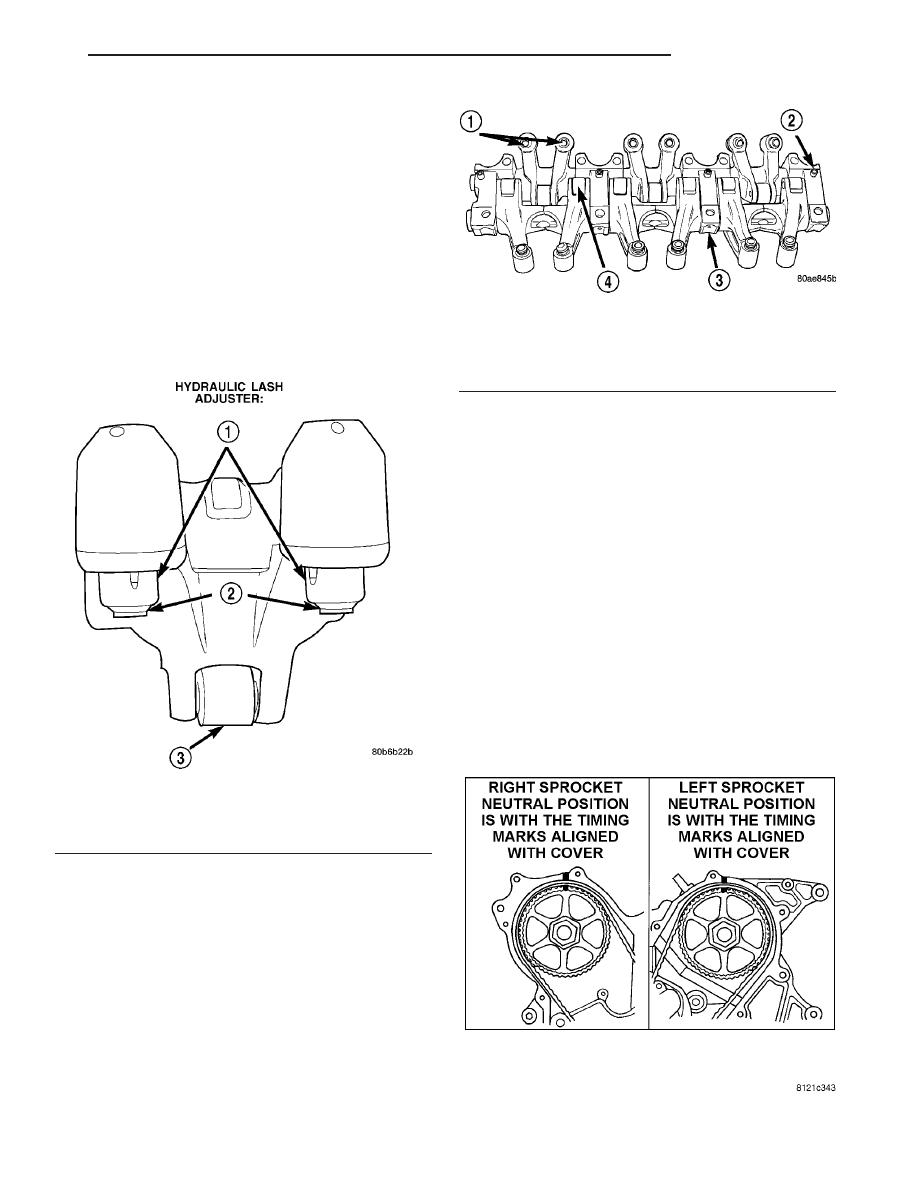Chrysler Pacifica. Manual - part 674

The intake and exhaust rocker arms are different.
They should be identified before disassembling the
assembly (Fig. 58).
Check rocker arms for wear or damage (Fig. 59):
• Roller scuffing or wear
• Shaft bore scuffing or wear
• Swivel pad on lash adjuster missing or broken
• Rocker arm showing signs of fatigue or cracking
• Roller axle protruding from arm
Replace assembly as necessary if any rocker arms
shows signs of wear.
CAUTION: Do Not remove lash adjuster from rocker
arm assembly. Damage to the adjuster and rocker
arm will result.
ASSEMBLY
CAUTION: New dowel pins must be installed when
reassembling.
(1) Install the rocker arms, and pedestals onto the
shaft.
(2) Install dowel pins (Fig. 60). Dowel pins pass
through the pedestal into the exhaust rocker shafts.
Dowel pins should be pressed in until they bottom-
out against the rocker shaft in the pedestal.
(3) Install rocker arm and shafts. (Refer to 9 -
ENGINE/CYLINDER
HEAD/ROCKER
ARM
/
ADJUSTER ASSY - INSTALLATION)
INSTALLATION
NOTE: Rocker arm and shaft assembly can be
installed either prior to or after (preferred) cylinder
head installation.
(1) Rotate camshafts to the position shown in (Fig.
61). With the camshafts in these positions the lobes
are in a neutral position (no load to the valve). This
will allow the rocker arm shaft assembly to be tight-
ened into position with little or no valve spring load
on it.
(2) Install the rocker arm and shaft assembly
making sure that the identification marks face
toward the front of engine for left head and toward
the rear of the engine for right head.
Fig. 61 CAMSHAFT GEAR TIMING MARKS
Fig. 59 Rocker Arm Assembly
1 - RETAINER
2 - SWIVEL PAD
3 - ROLLER
Fig. 60 Assemble Rocker Arms and Shaft
1 - HYDRAULIC LASH ADJUSTERS
2 - DOWEL PIN
3 - PEDESTAL
4 - ROLLER
CS
ENGINE 3.5L
9 - 51
ROCKER ARM SHAFT/ ROCKER ARM / LASH ADJUSTER (Continued)